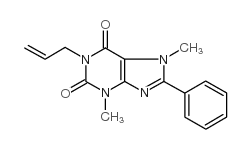| Structure | Name/CAS No. | Articles |
|---|---|---|
 |
1-Allyl-3,7-dimethyl-8-p-sulfophenylxanthine Sodium Salt
CAS:149981-25-9 |
|
 |
1-ALLYL-3,7-DIMETHYL-8-PHENYLXANTHINE
CAS:149981-23-7 |